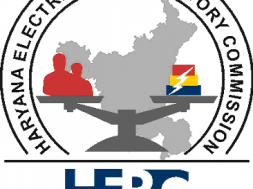
Water evaporation could provide vast amounts of renewable energy, find scientists
A new source of vast amounts of renewable energy – the evaporation of water – has been discovered by scientists.
Writing in the journal Nature Communications, researchers at Columbia University estimated that lakes in the US could generate 325 gigawatts of power, equivalent to about 70 percent of the country’s total electricity generation.
While they cautioned that the devices capable of turning water evaporation into electricity were still being developed, the scientists said their new analysis showed the enormous potential.
Professor Ozgur Sahin, a biophysicist involved in the research, said: “We have the technology to harness energy from wind, water and the sun, but evaporation is just as powerful. We can now put a number on its potential.”
His laboratory has developed one kind of ‘evaporation engine’, which works by using the movement of bacteria in response to changes in humidity.
Shutters either opened or closed to control moisture levels, prompting bacterial spores to expand or contract. This motion is then transferred to a generator and turned into electricity.
“Although these evaporation energy harvesters are in the early stages of development, recent advances water-responsive materials and devices suggest several pathways toward achieving the predicted performance levels,” the Nature Communications paper said.
“With advances in energy conversion performance, these materials and devices could potentially contribute toward solving energy and water-related challenges.”
However, it was “important to note” that harnessing this source of energy could affect water quality, recreation on lakes and other “freshwater resources”, the scientists cautioned.
But they also said the machines might reduce the loss of water in areas prone to drought.
“These consequences would impose additional design and planning constraints on such systems that could reduce the area available for energy harvesting,” they said.
“However, the potential area available for open water energy harvesting is substantial – lakes and reservoirs cover at least 95,000 square kilometres (excluding the Great Lakes) of the contiguous United States – and are found across a geographically diverse range of locations.
“Some of these regions suffer from periods of water stress and scarcity, which might favour implementation of these energy harvesting systems due to the reduction of evaporative losses.”
The researchers calculated that this could save 25 trillion gallons a year, about a fifth of the water consumed by Americans. California, Nevada and Arizona, where droughts are becoming an increasing problem, would benefit the most.
They also said the devices could help overcome the intermittency of other renewable sources of power, such as solar and wind.
“Evaporation comes with a natural battery,” said researcher Ahmet-Hamdi Cavusoglu, a graduate student at Columbia. “You can make it your main source of power and draw on solar and wind when they’re available.”
Professor Klaus Lackner, a physicist at Arizona State University who was not involved in the study, is currently developing artificial trees that draw carbon dioxide from the air, partly by using evaporation.
“Evaporation has the potential to do a lot of work,” he said. “It’s nice to see that drying and wetting cycles can also be used to collect mechanical energy.”















